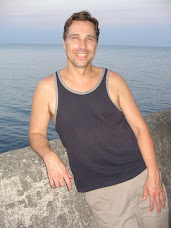Mystery writer PD James found her output "astonishing". Queer as Folk creator Russell T Davies thought her remarkable enough to include her as a character in his revival of the beloved Doctor Who series. And, oh yes--she’s also the best selling author of all time. No small feat for a woman with no formal education. I'm talking about the demure Dame Agatha Christie, writer of more than eighty books and plays, not all of them mysteries.
I tend to go on Christie binges, reading three or four titles in a row then putting her aside for a while. Truth is, I don’t want to run out. I turn to her when I want good fun, a bit of entertainment and common sense. She’s a delight when she’s good, a wonder when she’s great, and at the very least amusing--or tedious, depending on your outlook--when she is neither.
She was frequently brilliant, yet not above publishing dreck. (And happy to admit it, if only in her private diaries.) She was not a literary stylist and her characters can at times be downright annoying. Her true brilliance lies in baffling her reader's attempts to solve her crimes, with endless variations in so doing. It's sometimes possible to figure out the "who" of her whodunits, but it's close to impossible to figure out the how and why, even when the clues are laid out before our eyes.
You can't read just one Christie title and categorize her. If I were to create a Christie primer, these half dozen titles would be indispensable: The Mysterious Affair at Styles (both Christie's and Hercule Poirot's first appearance), The Murder of Roger Ackroyd (a classic, possibly her most audaciously brilliant work), And Then There Were None (also brilliant, though less likeable because none of the characters is sympathetic), Crooked House (one of Christie's favourites among her titles), Three-Act Tragedy (see my note below), and Curtain (Poirot's last, and perhaps most surprising case.)
Fans of the soft-spoken Jane Marple will note I haven't mentioned any of her books here. That's partly because I've read more of those belonging to Poirot, but also because I am less astounded by her cases, however much I enjoy her sly character.
Here's a roundup of titles I've read recently, with a possible rating from one to four stars.
Cat Among the Pigeons (1959) (**)
This is one of those hybrid Christie novels--half-mystery and half-thriller--which don't completely satisfy either genre. It's from what I call her late-middle period--post-war, but pre-sixties--where she seemed for a while to have become bored with writing. Some of her books from that period take on a rote quality, though the genius isn't completely missing. In a diary entry in the 1930s, she claims to have got tired of Poirot, calling him an "ego-centric creep", and uses him less well. In this case, he pops into the story's latter third to solve the crime without doing much other than uttering an occasional comment on morality. The plot involves a trio of murders at an all-girls school in England. This is preceded by a revolution in an imaginary country called Ramat, and involving a secondary plot about missing jewels. The story is further marred by unnecessarily having too many characters to keep track of, though the solution, as usual, is delicious.
The Body In The Library (1942) (**)
A somewhat more cohesive effort, this story features Miss Jane Marple, that quietly observant spinster whose understanding of human nature serves her well in her frequent forays into accidental sleuthing. Christie intended this as a parody of mystery genre cliches, thus the book's title. When a dancing girl turns up strangled in the library of an English gentleman, he claims to know nothing about her. His wife, a friend of Miss Marple's, cannily invites Jane to do some sleuthing on her own. A second body turns up not long afterwards. Apart from Marple, none of the characters is really compelling, and the book feels quickly tossed off, as though Christie couldn't wait to be finished with it. The story is further marred by having not one but four professional sleuths investigating the murders, though we know Marple will solve it. Sorting out the police inspectors gets tiresome, and the solution to the murders feels a bit arbitrary.
Murder at the Vicarage (1930) (***)
An early Christie, and the first to employ Miss Jane Marple, that diligent do-gooder with the pessimistic outlook on her fellow human beings. This is clearly a book Christie put a good deal of thought into, as all the loose ends tie up ever so neatly in a rather impressive way. A much-loathed magistrate is murdered in the vicarage at St Mary Mead. Suddenly everyone in the vicinity comes under suspicion for one reason or other. It takes Marple's all-seeing eye and quick wit to put the pieces in place, which she eventually does to good end. Plenty of fun characters and outrageous quips.
Three Act Tragedy (1934) (****)
An early Christie mystery featuring Inspector Poirot, which The New York Times called "Uncommonly good." I agree. By now, Christie has got very adept at her variations on a "locked room" murder. This is one of her best. The writing is smooth and the mystery is tight, though she drops her clues liberally throughout. It has the added attraction of a colourful, headstrong female character nicknamed "Egg." Poirot is already on the scene when a mild-mannered clergyman is poisoned at a cocktail party. At first, he can discern no motive and thus has no lead to follow. When at last he grasps it, he's shocked by its audacity. You will be too.
Jeffrey Round is a Toronto novelist and filmmaker. His most recent book is the mystery-thriller Lake On The Mountain, from Dundurn Books. Visit: www.jeffreyround.com.





